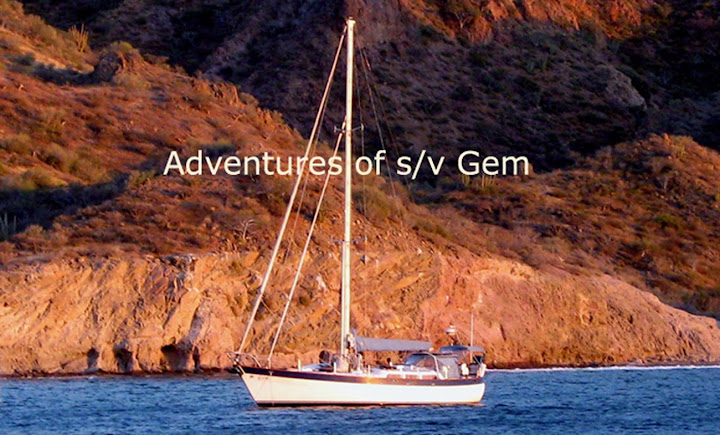
The Name of the Sea
The body of water we’ve been spending all this time in has many different names. As large as it is, you would think it would have just one name like The Red Sea or the Gulf of Mexico. But it goes by many names. Most Cruisers refer to it as the Sea of Cortez (referring to Cortez the Spanish explorer) because that is what our navigation and travel guides refer to it as. Or you can say simply ‘The Sea’. The Mexicans who live here laugh at the name Sea of Cortez. They refer to it as the Gulf of California or Golfo de California. For them, it has never been anything else. For my part, I like to refer to things by the name that the people use who live there. I guess they should know best. On the other hand, John Steinbeck’s preference in his famous Log Book was to refer to it as the Sea of Cortez because he thought that sounded more interesting.
There are 900 islands in The Sea. That’s why it’s possible to go only half a mile and find another island with a peaceful cove that has a white sandy beach and a volcano. That is where we are now. On the Island of Coronados. It’s part of the Parque Nacional Bahía de Loreto. So is Isla Carmen, Danzante Island and others. There are about six other sail boats here in the bay and a handful of Mexican panga boats that bring 2-6 passengers each from Loreto for a 20 minute fast boat ride to enjoy the beautiful beach for the afternoon.
There are many endemic species here in The Sea. This is also a migratory ground for humpback whales, California gray whales, Killer Whales, Manta Rays, and the world’s largest animal, the Blue Whale. There are two groups of sea animals migrating here. The first is the group that likes colder water which is this time of year. The whale sharks, California gray whales, and the yellow tail is part of this group. For them to feed on, there is a multitude of krill swimming in the water at this time of year which cuts down on our visibility for diving. The second group will make it’s appearance when the water temperature warms up substantially in June and July. Biagio is looking forward to the second group migration for warmer water and dorado fishing which will be great. So far we’ve caught skip jack tuna, sierra, cod, scallops, and lobster.

Today, April 25, the temperature of the water is a cool and comfortable 73 degrees which is nice to cool off in the water with the air temperature being about 79 degrees in the afternoon. Later on in July and August, the air temperatures will begin to soar to an average temperature in July of 88 degrees, August - 88, September - 85 and October - 80. The result is that the water temperature will be in the 80’s most of the summer. Since it’s spring time, the sea gulls are mating and looking for twigs for their nests near the beach, and the manta rays and rays are also mating doing a dance that ends in the female turning over in the water with their two undersides together. Spring is definitely in the air. And the water.
Schedules
As for us, we need to take the boat out of the water for 2 ½ -3 months because the boat has a couple of blisters on the bottom. First it needs to dry out before a new bottom paint is applied. So that has set our schedule. Staying in The Sea for the summer would be bearable if we were in the water. With the boat being out of the water for such a long period of time, we need to leave the boat or become lizards. So that is the basis for our plans. We will haul the boat out of the water in San Carlos in June or July. The boat will then be ready to bottom paint in October before heading to more southern countries. At least that’s the plan for now. You know those jello plans…before you can even let someone know what you’ve got planned, they have already changed.
Photos: The white sandy beach bay on Isla Coronados near Loreto. It’s spring time in the desert so at a glance, it appears that not much is happening. But if you look closer, you see a profusion of very tiny flowers on most of the plants and cactus.
